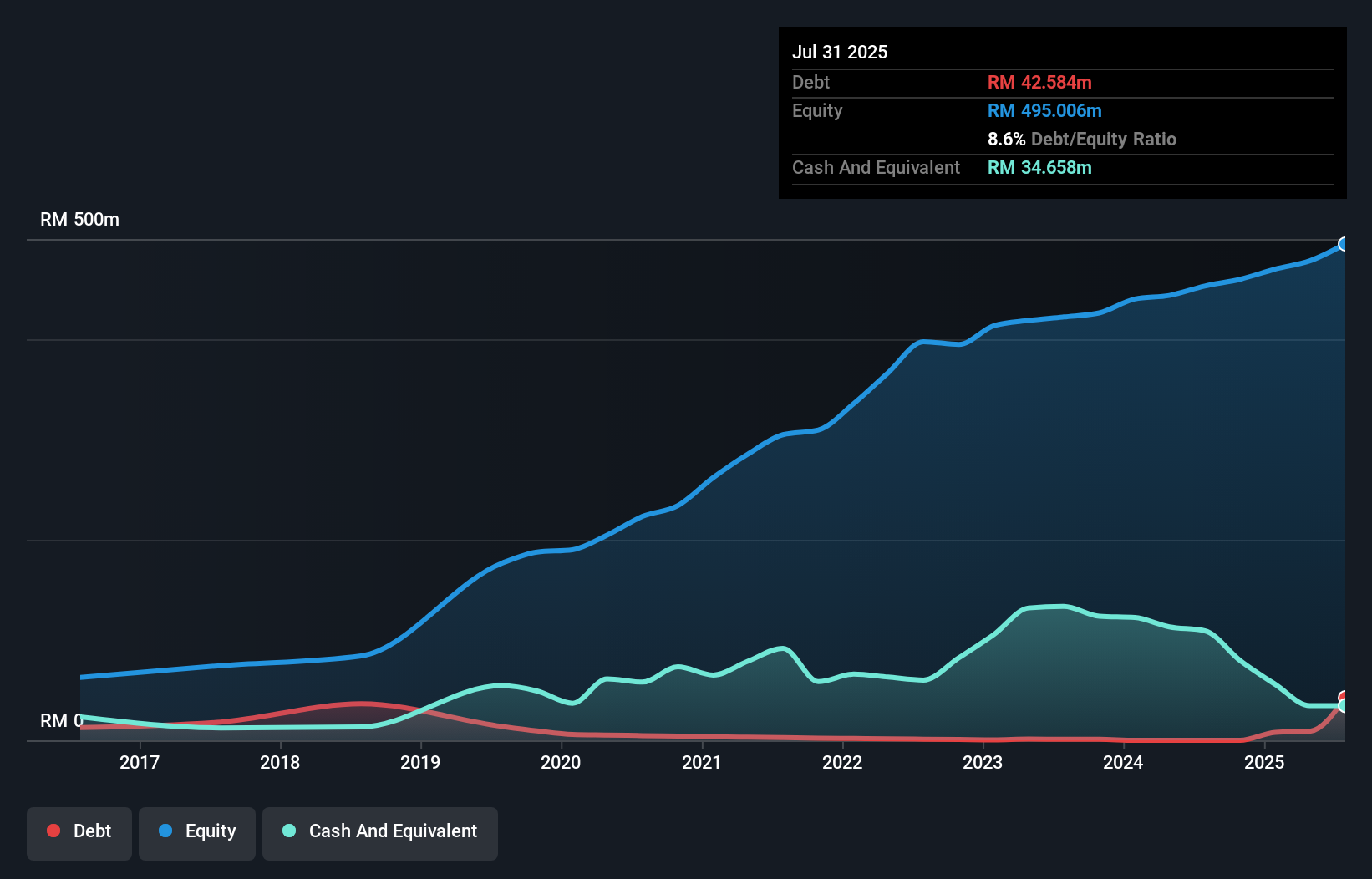Legendary fund manager Li Lu (who Charlie Munger backed) once said, 'The biggest investment risk is not the volatility of prices, but whether you will suffer a permanent loss of capital.' It's only natural to consider a company's balance sheet when you examine how risky it is, since debt is often involved when a business collapses. As with many other companies UWC Berhad (KLSE:UWC) makes use of debt. But the real question is whether this debt is making the company risky.
What Risk Does Debt Bring?
Debt and other liabilities become risky for a business when it cannot easily fulfill those obligations, either with free cash flow or by raising capital at an attractive price. If things get really bad, the lenders can take control of the business. However, a more usual (but still expensive) situation is where a company must dilute shareholders at a cheap share price simply to get debt under control. Of course, the upside of debt is that it often represents cheap capital, especially when it replaces dilution in a company with the ability to reinvest at high rates of return. When we examine debt levels, we first consider both cash and debt levels, together.
What Is UWC Berhad's Net Debt?
You can click the graphic below for the historical numbers, but it shows that as of July 2025 UWC Berhad had RM42.6m of debt, an increase on none, over one year. On the flip side, it has RM34.7m in cash leading to net debt of about RM7.93m.

A Look At UWC Berhad's Liabilities
According to the last reported balance sheet, UWC Berhad had liabilities of RM105.4m due within 12 months, and liabilities of RM12.3m due beyond 12 months. Offsetting this, it had RM34.7m in cash and RM201.6m in receivables that were due within 12 months. So it can boast RM118.5m more liquid assets than total liabilities.
This short term liquidity is a sign that UWC Berhad could probably pay off its debt with ease, as its balance sheet is far from stretched. Carrying virtually no net debt, UWC Berhad has a very light debt load indeed.
Check out our latest analysis for UWC Berhad
In order to size up a company's debt relative to its earnings, we calculate its net debt divided by its earnings before interest, tax, depreciation, and amortization (EBITDA) and its earnings before interest and tax (EBIT) divided by its interest expense (its interest cover). Thus we consider debt relative to earnings both with and without depreciation and amortization expenses.
UWC Berhad's net debt is only 0.12 times its EBITDA. And its EBIT covers its interest expense a whopping 63.4 times over. So we're pretty relaxed about its super-conservative use of debt. Better yet, UWC Berhad grew its EBIT by 138% last year, which is an impressive improvement. That boost will make it even easier to pay down debt going forward. The balance sheet is clearly the area to focus on when you are analysing debt. But ultimately the future profitability of the business will decide if UWC Berhad can strengthen its balance sheet over time. So if you're focused on the future you can check out this free report showing analyst profit forecasts.
Finally, a company can only pay off debt with cold hard cash, not accounting profits. So the logical step is to look at the proportion of that EBIT that is matched by actual free cash flow. During the last three years, UWC Berhad burned a lot of cash. While that may be a result of expenditure for growth, it does make the debt far more risky.
Our View
Happily, UWC Berhad's impressive interest cover implies it has the upper hand on its debt. But we must concede we find its conversion of EBIT to free cash flow has the opposite effect. When we consider the range of factors above, it looks like UWC Berhad is pretty sensible with its use of debt. That means they are taking on a bit more risk, in the hope of boosting shareholder returns. The balance sheet is clearly the area to focus on when you are analysing debt. However, not all investment risk resides within the balance sheet - far from it. For instance, we've identified 1 warning sign for UWC Berhad that you should be aware of.
At the end of the day, it's often better to focus on companies that are free from net debt. You can access our special list of such companies (all with a track record of profit growth). It's free.
New: AI Stock Screener & Alerts
Our new AI Stock Screener scans the market every day to uncover opportunities.
• Dividend Powerhouses (3%+ Yield)
• Undervalued Small Caps with Insider Buying
• High growth Tech and AI Companies
Or build your own from over 50 metrics.
Have feedback on this article? Concerned about the content? Get in touch with us directly. Alternatively, email editorial-team (at) simplywallst.com.
This article by Simply Wall St is general in nature. We provide commentary based on historical data and analyst forecasts only using an unbiased methodology and our articles are not intended to be financial advice. It does not constitute a recommendation to buy or sell any stock, and does not take account of your objectives, or your financial situation. We aim to bring you long-term focused analysis driven by fundamental data. Note that our analysis may not factor in the latest price-sensitive company announcements or qualitative material. Simply Wall St has no position in any stocks mentioned.
About KLSE:UWC
UWC Berhad
An investment holding company, engages in the provision of precision sheet metal fabrication, precision machined components, and value-added assembly services.
High growth potential with adequate balance sheet.
Similar Companies
Market Insights
Community Narratives




